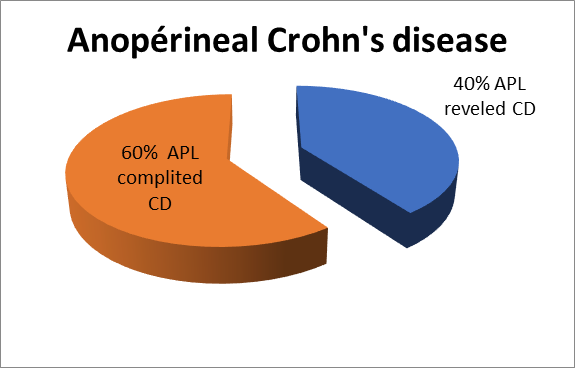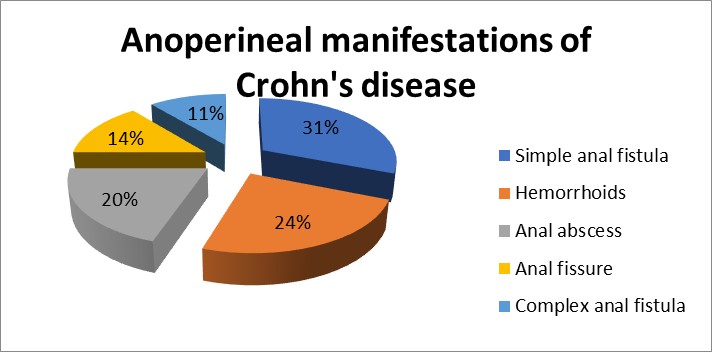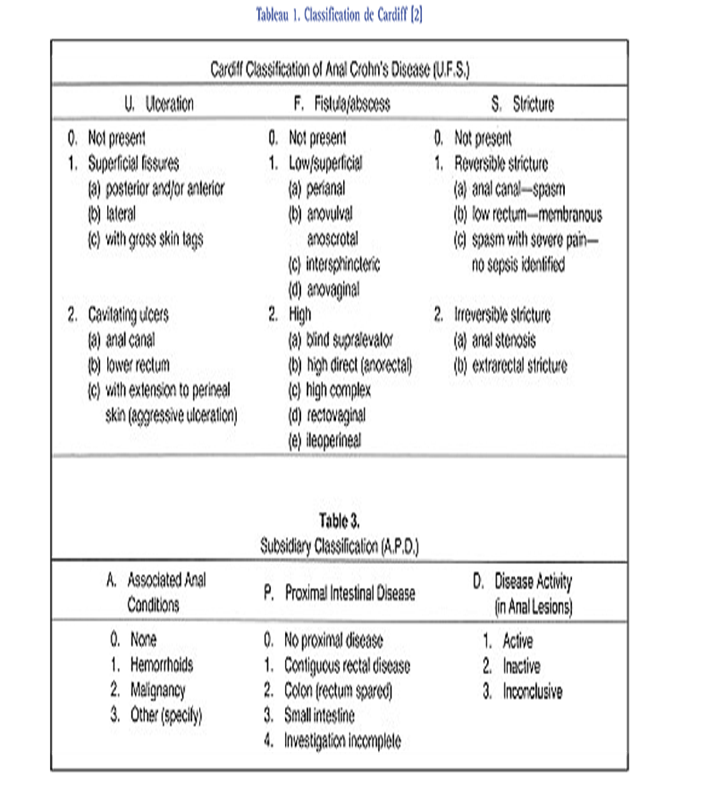AUCTORES
Globalize your Research
Research Article | DOI: https://doi.org/10.31579/2639-4162/260
Ferhat Abbas University. Setif 1. Faculty of Medicine. Research laboratory "Laboratory of Investigation and Specialized Research in Health, Environment and Innovations". Algeria.
*Corresponding Author: Ouahab Ilhem, Ferhat Abbas University. Setif 1. Faculty of Medicine. Research laboratory "Laboratory of Investigation and Specialized Research in Health, Environment and Innovations". Algeria.
Citation: Ouahab Ilhem (2025), Anoperineal Lesions of Crohn's Disease: About 55 Cases, J. General Medicine and Clinical Practice, 8(4); DOI:10.31579/2639-4162/260
Copyright: © 2025, Ouahab Ilhem. This is an open-access article distributed under the terms of the Creative Commons Attribution License, which permits unrestricted use, distribution, and reproduction in any medium, provided the original author and source are credited.
Received: 10 March 2025 | Accepted: 24 March 2025 | Published: 03 April 2025
Keywords: mc – lap – medico-surgical management – consultation multidisciplinary
Anoperineal lesions (APL) are common manifestations of Crohn's disease (CD). They are observed in more than 50% of patients. They affect about one in two patients and can precede luminal disease in nearly 30 %. Rarely isolated, LAPs are associated with luminal disease, often rectal, in 75 to 92 % of cases. The existence of LAP is a prognostic criterion for the severity of Crohn's disease. One distinguishes, classically, three types of elementary lesions: fistulas, ulcerations and inflammatory pseudo marisques. The medico-surgical management of LAP MC requires a correct evaluation of the lesions by a meticulous clinical examination, by a pelvic MRI or an endo-anal ultrasound. At the end of this assessment, the management of LAPMC requires collaboration between the gastroenterologist, the proctologist and the surgeon. Management must be considered urgently in the event of an abscess and in the long term to spare sphincter function and heal the perineal disease.
The objective of our work is to show the different anoperineal manifestations of CD observed in our department and their management. Retrospective study from January 2010 to December 2019 including 55 patients operated for an anoperineal lesion of CD.
Proctological surgery was the treatment of choice in case of APL revealing CD. In the case of LAP associated with intestinal CD, the surgical indication is only posed in more than half. Medical treatment (antibiotic, immunosuppressants and infliximab) was instituted. Anoperineal lesions require specific management in addition to the management of bowel disease. They affect the prognosis and even the quality of life of patients.
Crohn's disease (CD) belongs to cryptogenic colitis, despite the research devoted to it, remains a mysterious pathology whose origin remains unknown to this day. Currently, it is clearly increasing with predilection in young adults.It is an often-serious disease, and as such, requires long-term specialized care. Anoperineal manifestations (APM) are characteristic of CD and of great diagnostic value (1). Frequent, anoperineal lesions (APL) of CD are present in 30 to 50% of patients who have been symptomatic for 10 years (2). The objective of our work is to show the different anoperineal manifestations of CD observed in our department and their management.
This was a retrospective study from january 2010 to december 2019.Fifty-five patients were operated for an anoperineal lesion of Crohn’s disease. They were 45 men and 10 women. The average age was 33 years (16 – 70 years). Twenty-two cases (40 %) revealed CD and 33 cases (60 %) complicated intestinal CD. The lesions were accessible to a simple clinical examination and confirmed by additional explorations, especially in difficult cases. First-line proctologic surgery was performed in cases where anoperineal lesions revealed Crohn's disease. The surgery consisted of simple drainage of the abscess, flattening of the fistulous path in simple and basic anal fistulas (inter or trans sphincteric), a tight seton was indicated in the event of a high or complex anal fistula. The advancement flap was performed in complex anal fistulas. Hemorrhoidal skins were treated using the Milligan-Morgan technique. The search for inflammatory bowel involvement was carried out systematically after histological confirmation of Crohn's anoperineal lesions. In the case of LAP associated with intestinal CD, Surgery was indicated only in a few cases. Medical treatment was the reference treatment (antibiotics, immunosuppressants and biotherapy). Surgery for anoperineal lesions was treated surgically only after failure of medical treatment. forms with associated anoperineal lesions.
The sample of our study was composed of 45 men and 10 women.The average age was 33 years old (16 – 70 years old). Anoperineal lesions (APL) revealed Crohn's disease in 40 % of cases and complicated intestinal CD in 60 % of cases. The various anoperineal manifestations were represented by anal suppuration (anal abscess, simple and complex anal fistulas, anal ulceration) and haemorrhoidal scars. Anal suppuration was found in 62% (n = 34) and hemorrhoidal marisci with anal fissures in 38% (n = 21). In the forms of LAP revealing CD, the intestinal lesion was found in half of the cases. Patients were put on medical treatment (salicylate derivatives, corticosteroids, immunosuppressants or biotherapy) as appropriate. Intestinal resection was indicated in case of complications. Patients with anoperineal lesions associated with intestinal Crohn's responded to medical treatment (antibiotics, immunosuppressants or infliximab). Five cases of APL complicating intestinal CD were operated on after intestinal surgery. The postoperative course was simple. Healing was poor and slow in complex fistulas. Mortality was nil.


- Anoperineal lesions are important signs and of great diagnostic value in CD (3).
- In a patient with CD, the risk of appearance of an anoperineal lesion varies from 15 to 75
Anoperineal lesions are common and complicate intestinal Crohn's disease. They can be inaugural. They require specific management in addition to the management of the intestinal disease. They affect the prognosis and even the quality of life of patients. They deserve special attention from gastroenterologists and surgeons for chronic and complex diseases. Therapeutically, suppurative complications (abscesses and fistulas) represent 85 % of indications for surgical management of anoperineal lesions in CD (14). Contrary to that of ulcerations and anal fissures, the evolution of suppuration is independent of the luminal disease. The treatment of abscesses most often involves a gesture of surgical drainage supplemented by the establishment of a seton. The gold standard medical treatment for anal fistulas in CD is based on the use of anti-TNFα antibodies, the only treatments that have currently proven effective. The treatment of complex anoperineal suppuration ideally combines medical treatment and conservative surgical treatment (15). In the event of failure of the medical treatment manifested by recurrent sepsis, a new examination to optimize the drainage is recommended after a clinical and paraclinical evaluation without the need to stop the disease-modifying treatment if the surgical management is effective. Finally, in case of chronic suppuration, an adaptation of the basic treatment will be carried out (16).

Declaration of interest: The author declares no conflict of interest in relation to this article.